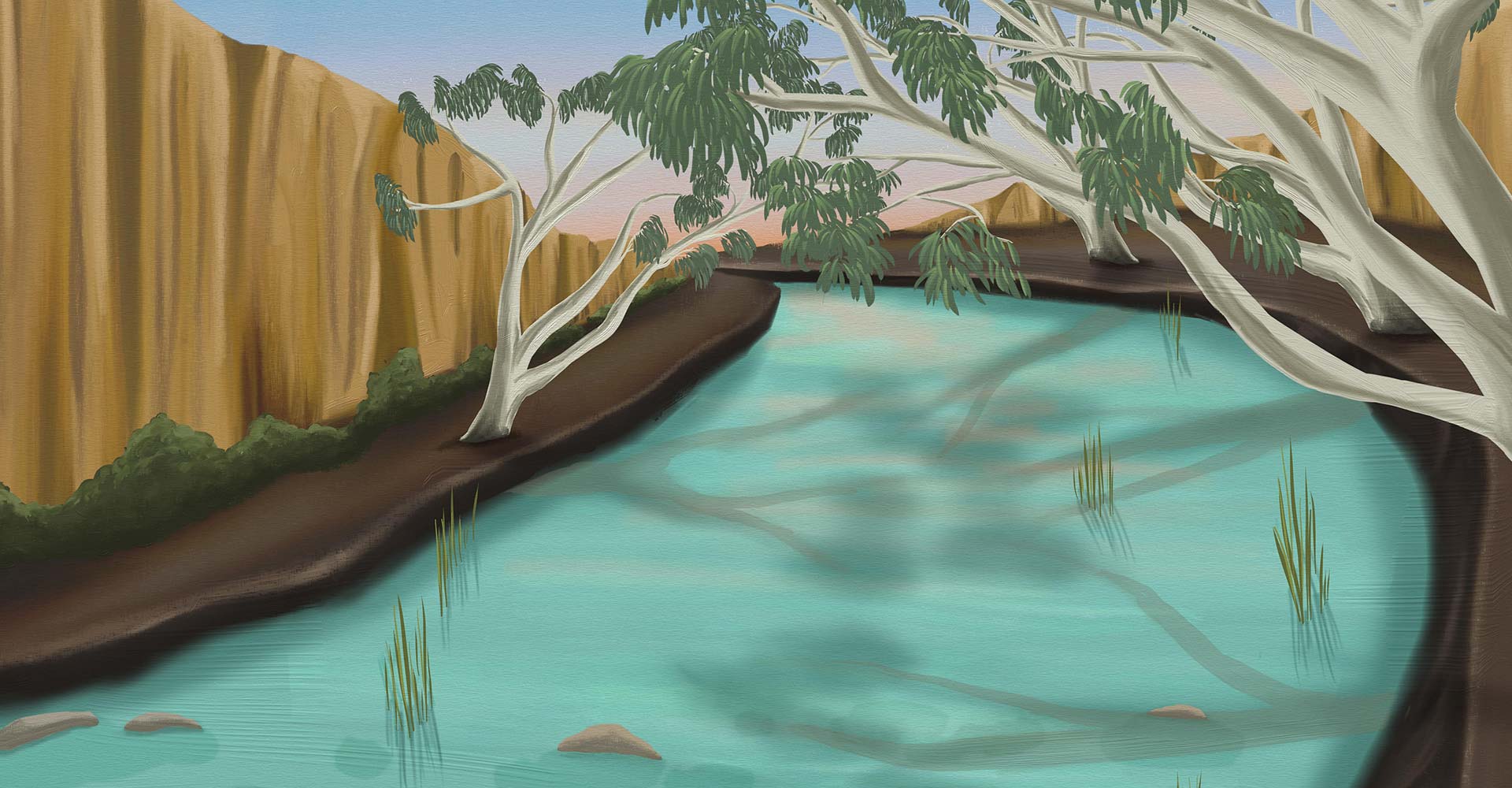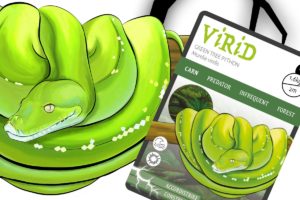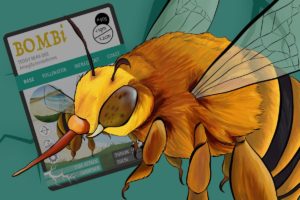
MiCRODON - Largetooth sawfish
“Ripples barely touch the surface of this murky waterway as a huge shadow moves along the floor. Using her massive saw to scuttle DESTRUCTOR from his hiding place, MiCRODON’s Saw Attack leaves little in its wake. She has crossed the Ocean to be here for the warmer months, as one of her weaknesses is a rapid drop in water temperature. She has entered this River via a tributary from the Coast, and is on the hunt for her prey...”
ANiMOZ #107
Code: MiCRODON
Common name: Largetooth sawfish
Taxonomy: Pristis microdon
Level: Carn | Form: Defend | Status: Infrequent | BiOME: River + Coast
Overcomes: Fire/Flood
Superpowers:
SAW ATTACK
With a spiky weapon attached to the front of her face, MiCRODON uses her Saw Attack to slash at groups of fish that try to hurry past her, or to stir up dense soil underwater to find hidden feasts. Her saw (also known as ‘rostrum’) can be 20-30% as long as her body, and has 14-24 teeth running equally along the sides.
ENDURANCE
MiCRODON has an amazing ability to swim long distances, with a distribution area around the globe of more than 7 million square kilometres! Being able to traverse large areas is helped by his ability to survive in both fresh- and salt-water.
REVERSE
If caught in a tight spot, or suddenly confronted with a threat, MiCRODON can exit rapidly by using her amazing Reverse power to swim backwards!
SCALE
When moving upriver, MiCRODON will sometimes come across a waterfall or rapid that is in his way. Using his Scale power, he puts his pectoral fins to use in order to climb up the obstacle or, if climbing isn’t possible, he will jump - sometimes more than two times his body length!
Weaknesses:
TEMPDROP
Whilst she can happily survive in waters ranging from around 24 - 32 degrees Celsius, MiCRODON is in trouble if the temperature plummets. Any water that falls below 19 degrees will kill her, meaning use of her Endurance Superpower can be lifesaving!
STONi
If up against STONi in a Clash, MiCRODON automatically loses to this fearless predator.


How ANiMOZ Helped Australian Wildlife in 2020
2020 was the first full year of ANiMOZ being out in the Ranger community! Whilst it was a challenging 12 months both for Rangers and endangered species, we’re proud to say we helped make an impact. We supported three organisations working to save some of your favourite ANiMOZ creatures out in the wild: Foundation for …
Species Report: EQUES the Leafy seadragon
EQUES is the Leafy seadragon (Phycodurus eques) – master of camouflage! Species report on the Leafy seadragon EQUES is a master of camouflage with a body covered in leaf-like protrusions and the ability to change colour! They grow 20-24 centimetres long, but it is unknown how long they live for. Leafies are the marine …
Species Report: iDEN the Adelaide pygmy bluetongue
The Adelaide pygmy bluetongue lizard is one of the winning species from the Aussie Wildlife Vote 2020, nominated by Zoos SA! Here’s all you need to know about iDEN (Tiliqua adelaidensis)! They do not have a blue tongue! They get their name because they are a small skink in the same genus as other bluetongue …
Species Report: iDEN the Adelaide pygmy bluetongue Read More »
From the Field: Ranger Frank talks about ACU!
From the Field: Headquarters speaks to real-life Rangers working to save ANiMOZ species like ACU the Short-beaked echidna! In our From the Field series, we talk to scientists working across Australia to save the Rare and Highly Rare animals you know from the World of ANiMOZ. Today, we hear from Ranger Frank who works with …
The ANiMOZ Aussie Wildlife Vote 2020 – Recap
The inaugural ANiMOZ Aussie Wildlife Vote has ended, with the Pygmy bluetongue being voted in to the Booster Packs in top position. After 31 days, 4000 votes, 30 species and tight competition, the 3 animals to make the first official ANiMOZ Booster Packs have been decided by you, Rangers from across Australia: the Pygmy bluetongue …
Learn about LAGOTi the Easter Bilby
The Greater bilby (Macrotis lagotis) is LAGOTi – a Highly Rare animal from the Desert! There were once two species of bilby – Greater and Lesser – but the Lesser bilby became extinct due to predation from Invasive Species (feral cats and foxes). Bilbies are believed to have inhabited Australia for up to 15 million …
Ranger Community: “The game has been a huge feature in our household”
In our Ranger Community series, we hear from ANiMOZ Rangers out in the field about how they use the game to learn about, teach about and support wildlife. The Rangers from EnviroEdu write to Headquarters about how they use ANiMOZ! The ANiMOZ – Fight for Survival card game has been a huge feature in …
Ranger Community: “The game has been a huge feature in our household” Read More »
From the Field: Ranger Tam talks about ANATi!
From the Field: Headquarters speaks to real-life Rangers working to save ANiMOZ species like ANATi the Platypus! In our From the Field series, we talk to scientists working across Australia to save the Rare and Highly Rare animals you know from the World of ANiMOZ. Today, we hear from Ranger Tam who works with ANATi! …
Species Report: ViRiD the Green tree python
The Green tree python (Morelia viridis) is ViRiD – a Carn Predator from the Forest! Adult Green tree pythons are 150-180 centimetres long, but can grow up to 200 centimetres They can live for up to 20 years Juveniles are a different colour from the adults. Found in Indonesia, Papua New Guinea, and northern …
Species Report: BOMBi the Teddy bear bee
The Teddy bear bee (Amegilla bombiformis) is BOMBi – a Pollinator species from the Coast BiOME Also known as the Golden-haired mortar bee – a solitary bee endemic to Australian coastal habitats. BOMBi is a large bee, growing up to 15mm long. A Pollinator species, the Teddy bear bee helps many of our native plants …










